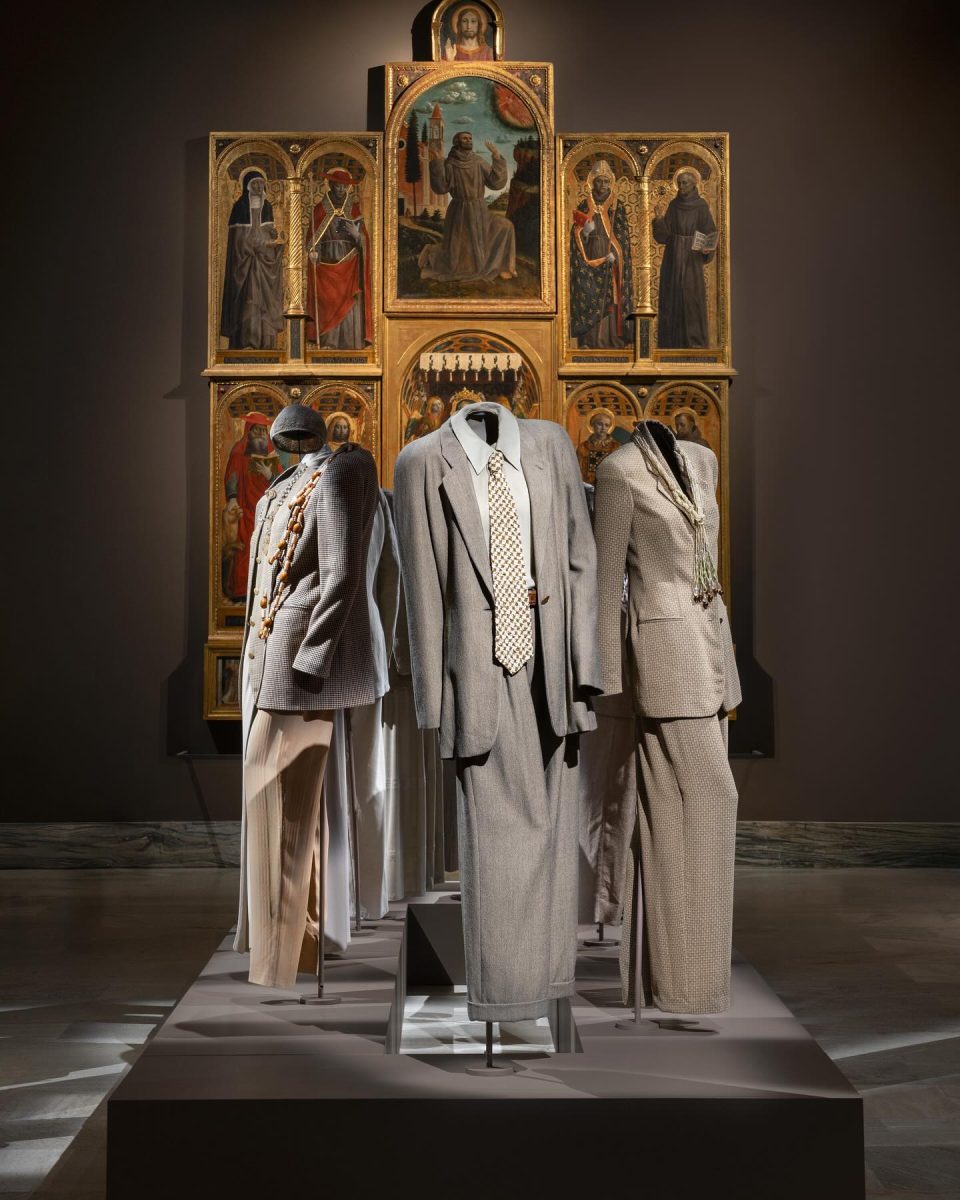Women’s art historically underepresented in museum
Copyright © Guerrilla girls, courtesy guerillagirls.com The Guerilla Girls are a feminist art activism group best known for their 1989 Metropolitan Museum advertisement (shown above) featuring statistics of women’s artwork in the museum.
March 16, 2021
Chances are, if you walked up the grand concrete staircase to the high arches of the Metropolitan Museum of Art, the farther you moved away from the busy hustle and bustle of Fifth Avenue, the closer you’d be to the unrelenting clutches of gender norms.
As of 2012, less than 4% of the artists in the Modern Art sections of the museum were women, but 76% of the nudes were female. This isn’t a statistic unfamiliar to the museum though. Enter: the Guerrilla Girls.
Asked to design a billboard for the Public Art Fund in New York City in 1989, the Guerrilla Girls created a work of art that drew attention to these numbers that are, quite frankly, more revealing than the art itself. The statistics then were less than 5% of the artists in the Modern Art sections were women, yet 85% of the nudes were female. The black letters broke through the yellow background yelling, “Do women have to be naked to get into the Met. Museum?”
The reaction was less than enthusiastic, and the art was declined. Still, the Guerrilla Girls decided to run it as an advertisement in New York City buses.
Since then, the group has traveled around, creating art installations that expose gender and ethnic bias and corruption in politics, art and pop culture. They call themselves “feminist activist artists” and hone in on flamboyant visuals to draw people’s attention, including themselves. The women wear gorilla masks when out in public to keep the attention on the issues rather than their identities.
Their most recent exhibition was a long yellow scroll, reaching from the ceiling to the ground, about arms-length wide, stating, “Unless all the voices of our culture are in the history of art, it’s not really a history of art. It’s a history of power.”
You’d think that by now, a museum like the Metropolitan would make a more significant change after these stunts came to light, but still the statistics remain hardly changed. Still women are shown as sexual objects rather than creative minds. What does this say about modern art, what does it say about women’s role in history and what does it say about women in general?
Several artists have attempted to bring exposure to this issue as well.
Going back to the early 20th century, Georgia O’Keeffe took art as activism to an unprecedented level as what seemed to be paintings of flowers soon took the shape of female genitalia. There has been controversy over the years about whether this expressionism was meant to highlight the things that it did. Although women were seen as sexual objects, their legs were often crossed or a sheet was draped over their pelvic region, bringing a growing feeling of shame to the parts of a woman that make her, well, a woman.
O’Keeffe painted watercolor portraits of flowers, enlarged to show the detail and natural beauty that makes up something so soft and bright. The emphasis was on the nature of life, showing novelty in the interpretations of art.
Singer Janelle Monae recently took a page out of O’Keeffe’s book, sporting pants that mirror this “flower come to life with a different meaning” grandeur. The pants drew just as much attention in the 21st century as O’Keeffe’s paintings did in the 20th century, which unfortunately isn’t very shocking.
See the double standard here?
Somewhere in the middle of these two, Cindy Sherman stepped into the light as one of the most important and influential women in art history. Rather than making art using traditional mediums, Sherman focused on using herself as a muse and letting her camera capture it.
In a series of 69 photographs known as “Untitled Film Stills” taken from 1977-1980, Sherman depicts the stereotypical female roles women were portrayed as in 1950s and ‘60s Hollywood, film noir and European art house films.
Sherman used wigs, makeup, costumes, prosthetics and props to change her image in each photo. In one photo she’s the bob-cut blonde presumably making her husband’s dinner in the kitchen with an apron cinching her waist, tied into a neat bow in the back. In another photo, she’s awestruck by the streets of New York, making it as a “career girl.” In still #28, you can see her in the filthy corner of what seems to be an apartment building, wearing nothing but a robe and the long locks of unbrushed hair cascading over her shoulders, as the black and white film stresses the look of the dark circles under her eyes — the deadbeat girl who deserves to be tucked back into the shadows of the scene. She can be seen in these roles along with schoolgirl, bombshell, fashionista and more.
These cliches highlight how women are viewed in society and the different personas women are “allowed” to aspire to. Sherman was continually critical of contemporary image culture and how mass media shaped the opinions of those who consumed it. Media consumption can often reflect societal values of women, and it can shape how we view women.
In an age of vast consumerism, this is more important than ever.
This month let us not celebrate women’s history, but women in history. History is collective and not for one singular sex to own. It is the history of everyone, showing not only the achievements of women, but how they have been shown in history. How they have often been shoved into the dusty parts of history to not be touched for another 100 years, that is, unless they have something to offer the male gaze or capitalistic ventures. Being a woman is being a piece of art. Sometimes we are adored. Sometimes we are objectified. Sometimes we are misunderstood. Above all, we are united in both our struggles and our victories. Let us celebrate the women in art history who devoted their careers for women to break through the glass ceiling — Metropolitan or not.






